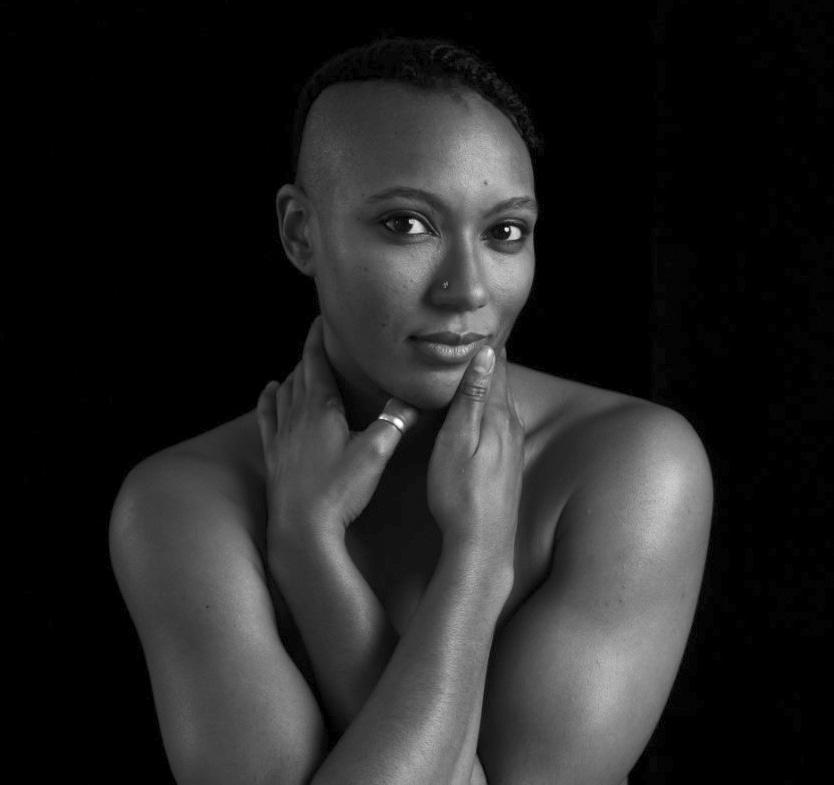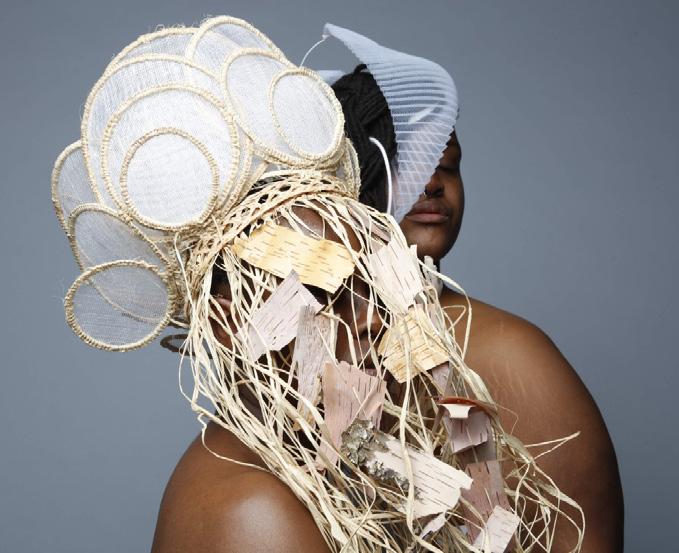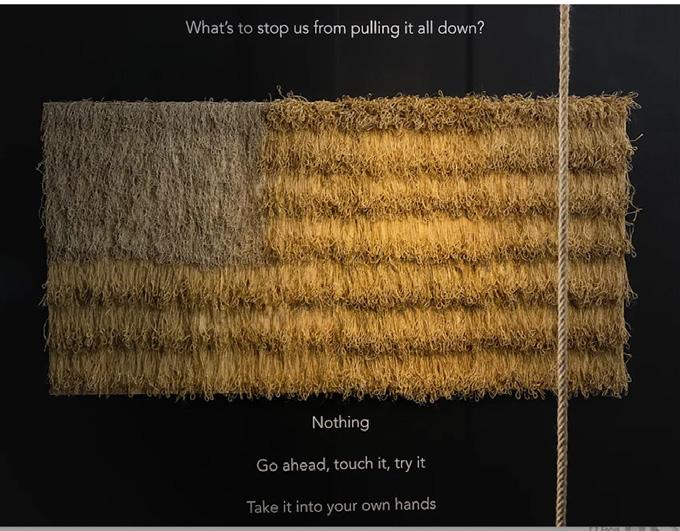
4 minute read
The Art of
. Om . olará Creates Art to Speak to People
By Anders J. Hare
m . olará Williams McCallister — who uses the pronouns o, love and beloved — is a dynamic creator who shows up through many forms of art and has actively organized around social justice issues on the local, regional and national levels since the age of 13. . Om . olará is bringing beloved’s talents to Charlotte as an artist-in-residence at the McColl Center during the winter/ spring season, along with artists Rachel Eng, Irisol Gonzalez and André Leon Gray. The residency started Jan. 17 and ends April 19.
Born and raised in Atlanta, Williams McCallister had various cultural foundations, including at Atlanta’s first Congregational United Church of Christ, where O sang on the choir and where O’s artistic journey began. Using those musical roots, . Om . olará has been able to cultivate a mixed-media approach to art in which O uses to visualize experiences love had growing up as a Black, queer person in the church.
“I’ve really been thinking a lot lately about the cultural technologies that are preserved and passed down in the Black church,” McCallister explained. “There’s an interesting history with queer folk in the Black church and queer folk and the choir in Black church specifically, and the spaces where we were or weren’t allowed to be. With those [hymns], I’m taking them into a neutral doctrinal space where people can have those experiences and have that emotional journey, that shepherding, without violence.”
In addition to . Om . olará’s church foundation, Williams McCallister said O also grew up in the Bill Pickett Invitational Rodeo. A renowned institution, BPIR was founded to honor Black cowboys and cowgirls. It features an aesthetic culture contrasting to white rodeo spaces, including bedazzlement, fringe and other stylistic choices. It’s part of the reason why Williams McCallister chooses to channel O’s experiences through art in a way that resonates with O’s audience.
Photo by Rob Ferrell


Top: McColl Center artist-in-residence, . Om . olará Middle: . Om . olará piece, “Will To Adorn.” It’s “a ritual performance exploring the ways that Black queer, trans and gender non-conforming people use adornment as a way to begin to fully embody ourselves.” — . Om . olará Bottom: Titled “Noose Nap Flag,” this artwork by . Om . olará is made of over 7,200 miniature nooses.
“I’m making work about the things that I think are interesting to explore because art is a research-based practice,” O said. “As an artist, I’m really striving to make work that can speak to people first-hand. I had this personal embodied response to this thing, and maybe reading about it also increases the experience, but it doesn’t have to be gotten to through the book. You can use your eyes and your references to understand what’s happening there.”
One of the standouts of Williams McCallister’s work is . Om . olará’s ability to project O’s own feelings and experiences about injustice into O’s work. During the residency, the McColl Center hosts a group show which features the work of residents. One of the two works Williams McCallister will present during the show is called Noose Nap Flag, which represents the nonchalant nature of the knot matched with the ruinous symbolism it has on African American culture, O said.
“This particular knot, according to the sources that I’ve read, was perfected here in the United States,” O explained. “It’s not used for sailing. It’s not used for agricultural purposes. It’s not used on farms. It’s a difficult knot to tie. So it’s not something you accidentally end up happening upon. You have to mean it.
“And that means that in the same way that people were passing down quilting patterns, people were out here passing down this knowledge of how to tie this specific knot,” O said. “And that history really set heavy on me, to know both the knot itself is intentional. But also the preservation of this knowledge is intentional, and the preservation of this knowledge that is used for this one very specific thing is intentional.”
Much of Williams McCallister’s work revolves around southern culture, as well as fostering healthy relationships with the aspects of O’s life that make up that heritage. As a southern, queer, Black person, . Om . olará hopes O’s experience at McColl Center and in the Queen City adds to that heritage.
“The McColl Center is pretty special for me, because I haven’t spent substantial time in the south since I left in 2008,” O said. “One of the things that I’m hoping to be able to do is to build community here as an adult, and professional community as an artist that will eventually allow me to move back to the southern region.”
Visit the artist’s website at omolarawilliamsmccallister.art/.










